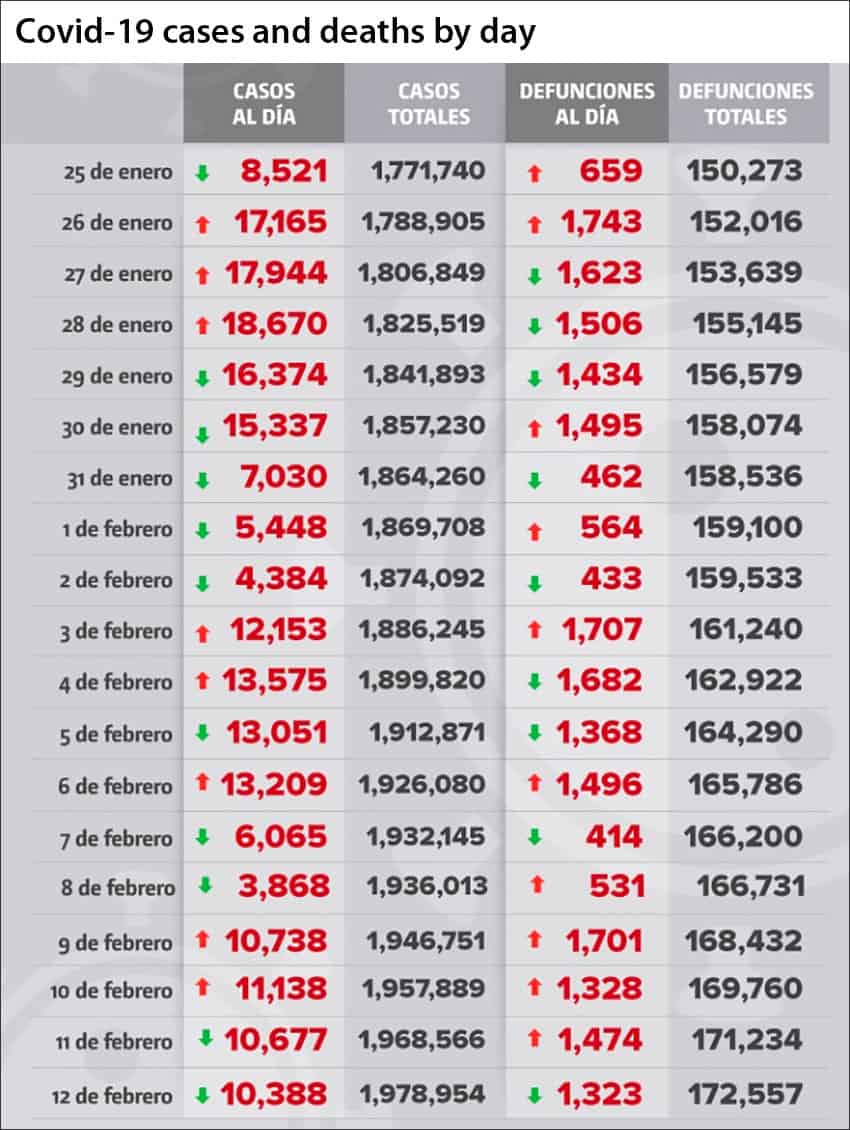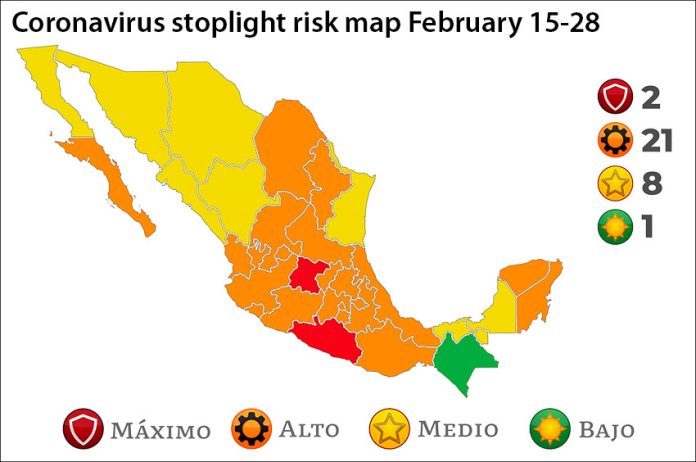Mexico will have just two maximum risk red light states as of Monday, according to the updated coronavirus stoplight map presented by the federal government on Friday, a reduction of 11 compared to the map currently in force.
Health Ministry official Ricardo Cortés said that only Guanajuato and Guerrero will remain red next week, while the other 11 maximum risk states will switch to high risk orange.
Orange is the predominant color on the updated map, with 21 of Mexico’s 32 states painted that color.
The orange light states for the next two weeks will be Mexico City, México state, Nuevo León, Jalisco, Querétaro, Hidalgo, Morelos, San Luis Potosí, Puebla, Nayarit and Colima – all of which will switch to that color from red – as well Baja California Sur, Coahuila, Zacatecas, Veracruz, Michoacán, Aguascalientes, Oaxaca, Yucatán, Quintana Roo and Tlaxcala, which are already orange.
There are eight medium risk yellow light states on the updated map and one at low risk green – Chiapas, which will return to that color on Monday four weeks after it regressed to yellow.

The yellow light states for the next two weeks will be Baja California, Sonora, Chihuahua, Durango, Sinaloa, Tamaulipas and Tabasco – all of which will switch to that color from orange – as well as Campeche, which is already yellow.
Each stoplight color, determined by the Health Ministry using 10 different indicators including case numbers and hospital occupancy levels, is accompanied by recommended restrictions to slow the spread of the virus but it is ultimately up to state governments to decide on their own restrictions.
The publication of the updated stoplight map, on which no state regressed to a higher risk level for the first time this year, comes as new case numbers are trending downwards.
There are currently 67,688 active cases in the country, according to Health Ministry estimates, whereas the figure was above 110,000 in late January. The average number of daily cases reported in the first 12 days of February – 9,558 – was 32% lower than the daily average in January.
Cortés highlighted that the national positivity rate – the percentage of Covid-19 tests that come back positive – had recently declined 4% to 34%. The national hospital occupancy rate for general care beds is 45% and only two states – Mexico City and México state – have a rate of 70% or higher whereas several states were recently above that level.
But while there is evidence that Mexico is coming through the worst days of the pandemic – January was the worst month to date for both new case numbers and Covid-19 fatalities – the daily death rate remains very high.
The Health Ministry reported a daily average of 1,168 fatalities in the first 12 days of February, an increase of almost 11% compared to January.
Mexico’s accumulated case tally rose to almost 1.98 million on Friday with 10,388 new cases reported while the Covid-19 death toll increased to 172,557 with 1,323 additional fatalities registered.
As the spike in case numbers in January was largely attributed to family and friends coming together over the Christmas–New Year holiday period, authorities are understandably urging people to not gather in large numbers for Valentine’s Day celebrations this Sunday.
In Mexico City, Mayor Claudia Sheinbaum called on citizens to not organize or attend parties or family gatherings this weekend, advising people to wait until “we’re all vaccinated” before celebrating with loved ones.
Mexico’s vaccination efforts have virtually stalled as there is a very limited number of doses currently in the country, but about 1.5 million AstraZeneca and Pfizer shots are expected to arrive over the next two days, allowing the inoculation of seniors to begin.
To date, Mexico has administered just over 726,000 Pfizer vaccine doses, mainly to the country’s frontline healthcare workers.
Source: El Universal (sp)
